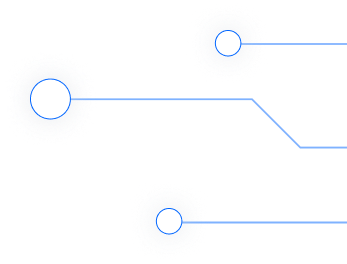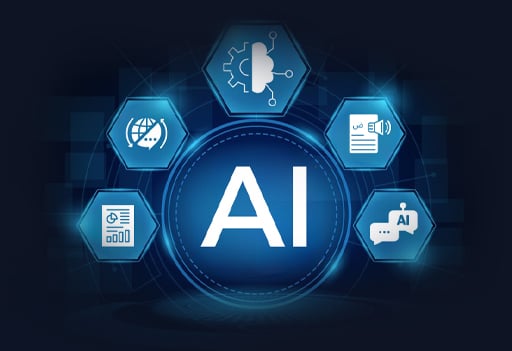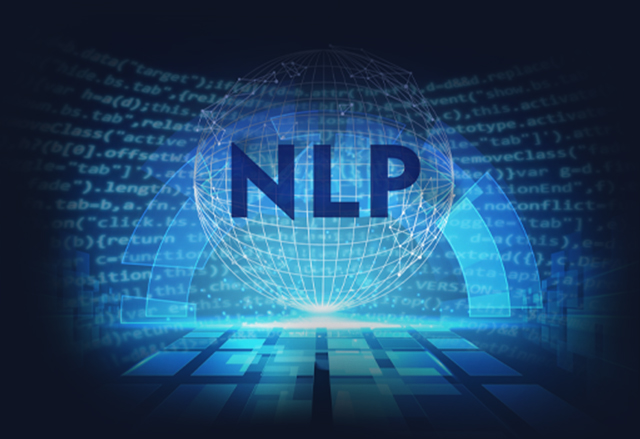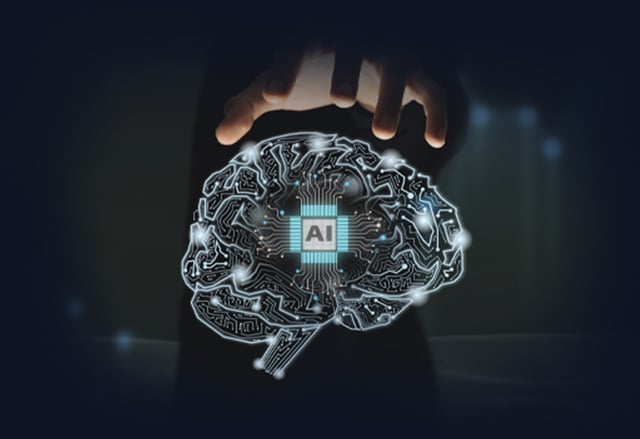The Best Features to Look for in An AI Arabic Chatbot

Imagine having a friendly, super-smart companion in the digital world who understands Arabic and can chat with you effortlessly.
AI Arabic chatbots aren't just tech tools; they serve as your digitized confidants, fluent in your language, and enhance online encounters by providing tailored experiences.
An AI chatbot is a computer program that can chat with you, answer questions, and even solve problems. It uses artificial intelligence and natural language processing (NLP) to understand what you're saying and respond in a friendly and useful way. Think of it as a smart friend or assistant on your phone or on a website, always ready to lend a hand or have a chat! But what features do you need to look for when purchasing an AI Arabic chatbot?
Key Features in AI Arabic Chatbots
Language and Dialect Detection
The first and foremost feature you want to look for is the ability of your AI chatbot to automatically detect languages.
You want the chatbot to be able to figure out what language you are speaking instead of specifically prompting you to choose a language. This speaks to the capabilities of the chatbot you are using.
Chatbots should be able to communicate with customers in multiple languages, broadening their reach to a global audience.
Your chatbot should be instantly able to differentiate between English and Arabic languages.
The Arabic language is rich with different Arabic dialects. The ability to detect Arabic dialects, and not only languages, is a huge plus. It makes the experience much more intuitive for your users. Imagine your user using Egyptian slang to talk to your chatbot; your chatbot shouldn't get confused;
it should be able to understand what the user is trying to communicate and provide a satisfying response.
Otherwise, your customers can get frustrated with the bot's lack of understanding.
Handling adjacent topics
When you first call customer service, you can introduce yourself and dive into your problem in the same sentence.
You don't need to tell the customer service agent that these are two different topics.
Humans can understand this quick switch in topic and handle it very well.
On the other hand, when it comes to chatbot technologies, some fall short in this area.
They need you to finish the introductions and then walk them slowly through your problem.
However, you want a chatbot that can handle these quick switches in topics without getting confused.
This way, your customers feel like they are talking to a human instead of a machine. It makes their experience much smoother.
Handling Conflict
Sometimes, your customers have so much going on their minds. You can have a customer requesting two services at the same time.
If your chatbot is not ready to handle these cases, it can get quite hectic. Picture a customer who wants to both lose weight and get vaccinated.
Your chatbot should be able to tell that the customer wants two separate things and offer them the help needed.
Entities Recognition
What do we mean by entity recognition? Picture your customer asking to make a complaint about a certain branch.
They give you the branch name and expect you to take action. Well, entity recognition is a feature that enables your chatbot to extract the branch name from a whole sentence and recognize it being a separate entity. This makes handling customers' complaints and inquiries much more quickly. This way, the chatbot knows that the Cairo branch and the Alexandria branch are two different entities and understands the differences between them. It doesn't mix up their attributes such as address or telephone number.
To elaborate further, when a customer orders a bottle of milk and a kilogram of apples, your chatbot should be able to recognize how milk and apples are two different products with distinct attributes such as availability and price. Hence, it can serve your customers in the best way possible.
Data Analysis Platform
Data is the magic word for your business. If you have data and you know how to use it well, you can come up with informed and smart decisions to help your business grow.
However, scatted information is not helpful on its own. You don't benefit from knowing who ordered a bottle of milk and a package of tea or when. When you take a step back and look at the bigger picture, you realize that most people who order tea order sugar with it.
Chatbots can gather valuable data about customer interactions, preferences, and pain points, which can be used to improve products, services, deals, and offerings.
You will be able to determine crucial information by analyzing your data, such as what is the most sold item in your store or which day of the week is the busiest for your store. All of this can help you better allocate your resources and come up with decisions backed up by facts.
A/B Testing
A/B testing is a clever way to figure out what your users prefer. You take two versions of something (A and B), like a webpage design or an email, and show them to different groups of people. Then, you see which one gets a better reaction, like more clicks or purchases.
It's all about making sure your digital product is in its best shape and form for your users.
Having an AI chatbot that supports A/B testing is a huge plus. It helps your chatbot get better and better over time. Not only will it save you a lot of hassle, but it will also enable the bot itself to figure out the best
and most effective ways to be more helpful and useful to you as well as your users.
Sentiment Analysis
To put it simply, sentiment analysis is the ability to recognize human emotions. With sentiment analysis, AI chatbots can pick up on your mood.
So, whether you're happy, frustrated, or somewhere in between, they can respond with the right tone and show the appropriate amount of sympathy
Furthermore, when you're upset, you want quick help, right? Sentiment analysis helps chatbots prioritize urgent issues. If you're feeling down, they can jump in and assist, saving you time and reducing frustration.
With advances in natural language processing and understanding, chatbots can engage in more natural and friendly conversations, improving the overall user experience.
Ultimately, Your user’s emotions and feedback matter! Sentiment analysis helps companies understand what's making customers happy or frustrated. This info, in turn, can be used to improve products and services, ultimately making your experience even better.
Personalization
They say that the best way to make someone like you is by calling them by their name. That's exactly why you need to look for personalizing the user experience every step of the way. Your chatbot should be able to automatically detect your customer's name and basic info to tailor the conversation accordingly.
Personalization also means the chatbot knows your user's preferences, history, and needs. It can offer advice, suggestions, and solutions that are just right for them, like a personal shopper. So, if your customer buys a specific product, the chatbot should be able to recommend similar products tailored to the customer's preferences.
Personalized interactions make your customers feel valued and understood. It's like having a chat with someone who listens and cares about what they have to say.
Omni Channel Communication
Omnichannel communication is like having a highly advanced virtual assistant who can seamlessly interact with you across various devices or platforms, be it mobile applications, websites, or elsewhere! This feature ensures your users have uninterrupted conversation by by retaining dialogue history, regardless of the starting stopping point of the conversation. Its primary goal is to enhance the user experience and streamline customer support services by providing assistance whenever and wherever required.
Imagine you're shopping online, and you have questions. You can chat with the bot while browsing the website. Then, if you switch to the mobile app to place an order, it's still with you, ready to help!
Knowledge Mining (KM)
Knowledge mining is like giving AI chatbots super detective skills! It's a way for them to sift through mountains of information to find valuable insights, answers, and solutions. Think of it as their secret power to quickly gather, understand, and share the most helpful knowledge with you.
With this knowledge, AI chatbots can provide instant answers, helping your user out in a flash.
The chatbot's knowledge is constantly updated, ensuring you get the latest and most accurate information,
like having an up-to-date encyclopedia at your fingertips.
Speech-to-text (STT)
"Hey, Siri...what's STT?"
Well...
STT stands for speech-to-text. The AI chatbot simply can convert the user input from spoken words into written words.
Not everyone can type or wants to. STT makes chatbots more inclusive, so people with different abilities can easily use them.
Imagine you're cooking or driving, and you need some info or help. With STT, you can just talk to the chatbot,
and it can assist you without needing you to type.
Text-to-speech (TTS)
TTS, or text-to-speech, makes AI chatbots sound more like humans, so when they respond, it feels like you're chatting with a real person,
not a robot. It's a game-changer for people who might have trouble reading text. TTS ensures that information is accessible to everyone,
regardless of their reading ability.
They also support multitasking. You can keep doing what you're doing while the chatbot reads the information aloud.
Furthermore, sometimes it's just faster to listen than to read. TTS provides instant responses, saving you time and effort. Chatbots can also convey emotions and tone through their voice, making the conversation more engaging, enjoyable, and, most importantly, human-like.
The world of AI Arabic chatbots is brimming with exciting features that are revolutionizing customer service, enhancing user experiences, and bridging language barriers. From natural language understanding to personalized interactions and multilingual support, these chatbots are more than just tools; they're your intelligent virtual assistants in the digital realm.
As businesses and individuals continue to explore the boundless potential of AI Arabic chatbots, one thing is certain: the future holds endless possibilities for innovation, connection, and effortless communication.
So, embrace the future of AI chatbots and discover the remarkable benefits they bring to the Arabic-speaking world!
Frequently Asked Questions (FAQs)
What are AI chatbots?
AI chatbots are computer programs that use artificial intelligence (AI) to engage in conversations with users.
They can understand and respond to text or speech inputs, making them capable of answering questions, providing information, assisting with tasks, and even simulating human-like interactions in a chat format.
AI chatbots are widely used in customer service, virtual assistants, and various applications to automate tasks and provide assistance to users.
How do AI chatbots work?
AI chatbots work by using natural language processing (NLP) and machine learning techniques to understand user messages, identify their intent, generate responses, and maintain context.
They aim to provide helpful and human-like conversations, often learning from user interactions to improve over time.
What are the benefits of incorporating chatbots?
Using an AI chatbot offers several benefits:
- They work around the clock: AI chatbots are always online and ready to assist, even outside of regular business hours, ensuring that customers can get help whenever they need it.
- They provide instant responses: Chatbots can provide instant responses to customer inquiries, reducing wait times and improving overall .
- They save you money: AI chatbots can be cost-effective compared to hiring and training human customer service representatives, especially for routine tasks.
- You can go big with them: Chatbots can handle a large volume of inquiries simultaneously, making them scalable to meet increasing customer demand.
- They never have bad days: Chatbots provide consistent information and support, ensuring that customers receive the same quality of service regardless of the time of day or the person they interact with.
- The power of automation: Chatbots can perform routine tasks, such as order processing or appointment scheduling, freeing up human agents to focus on more complex and meaningful interactions.












